I'm working with flat communities. My goal is to know the number of vertices per community. You can see on the picture below that my vertices are organized in communities and that these communities do not contain edges to each other.

Therefore, I would like to index my vertices to reflect this. I thought about cluster all vertices based on any order of neighborhood independent of the edge direction. However, I don't know which algorithm would provide this. Can you point out which one would give me this outcome?
I thought about cluster_walktrap(x,steps=100)or maybe even with higher number of
steps to ensure the behavior that would find all vertices in the community.
I believe there is a better way to do so, but I'm stuck.
Thank you in advance for your time.